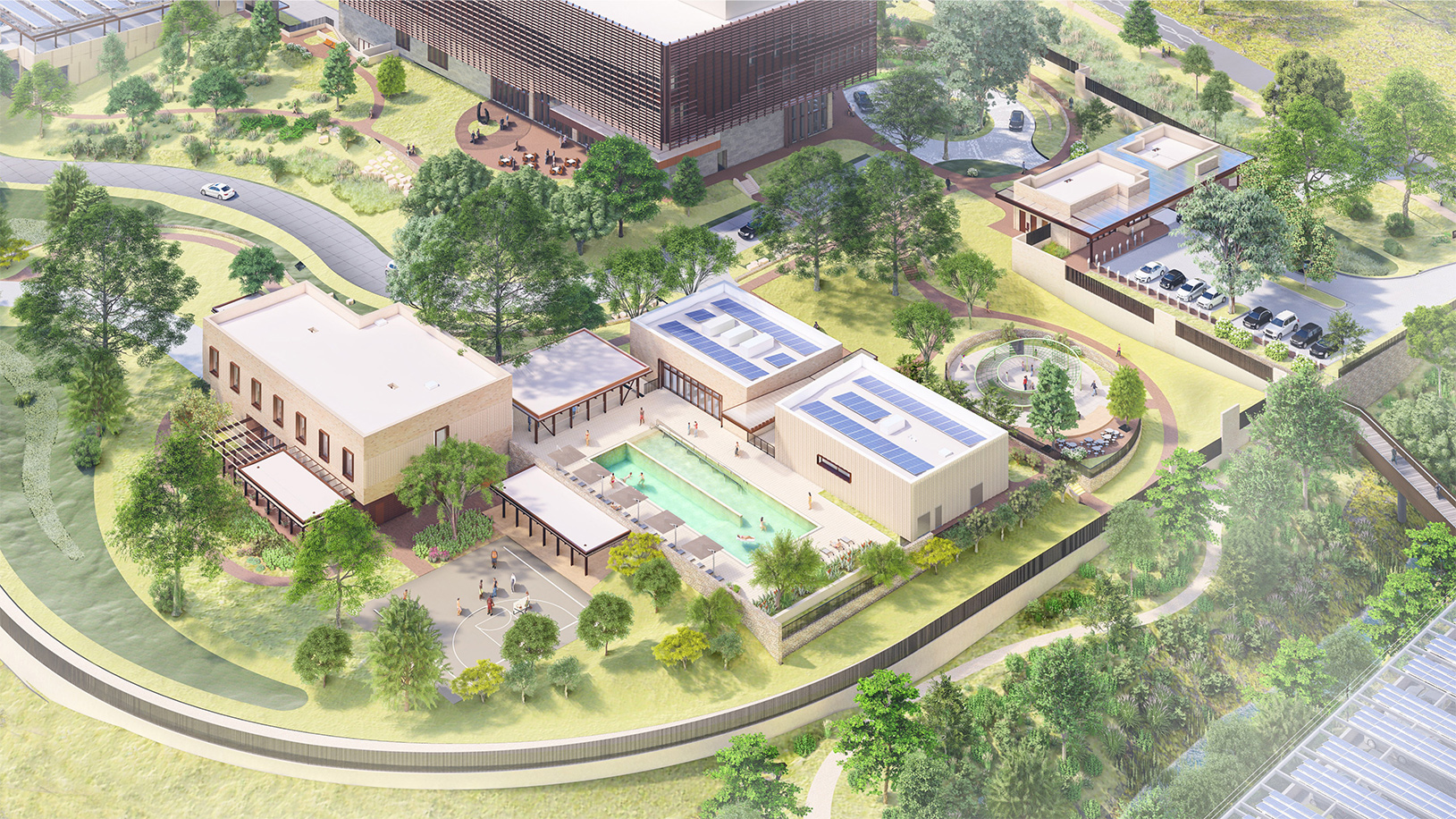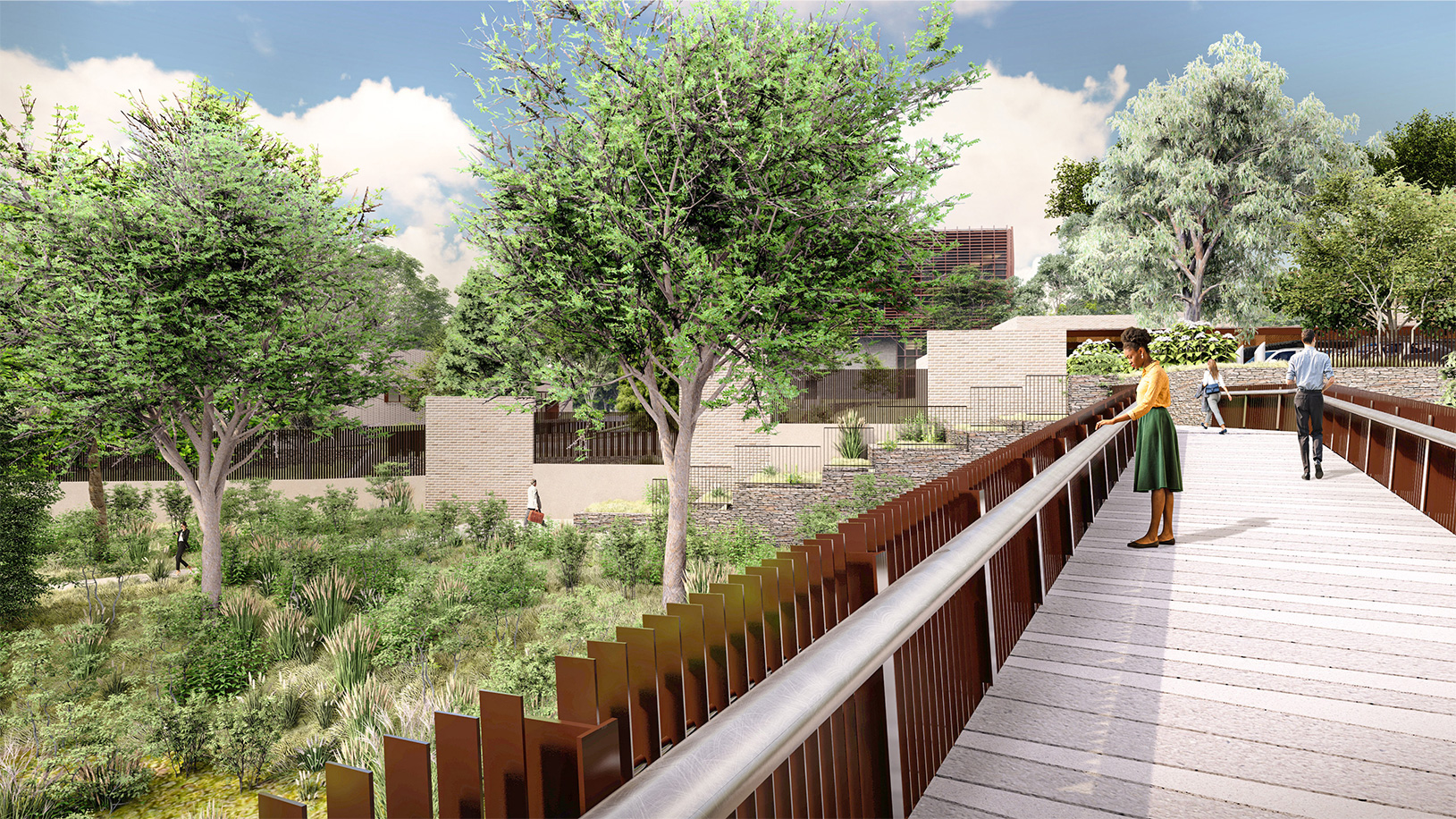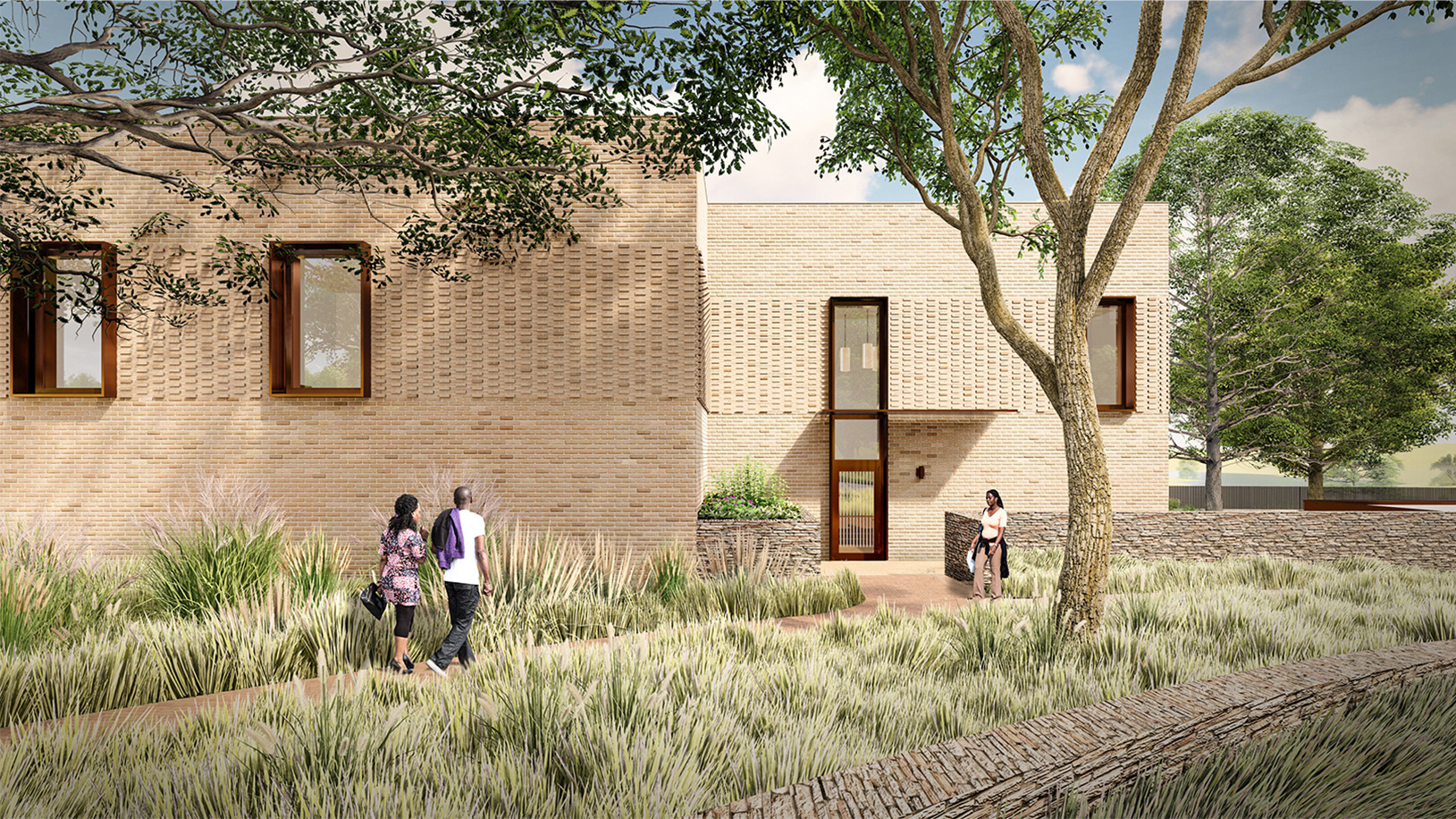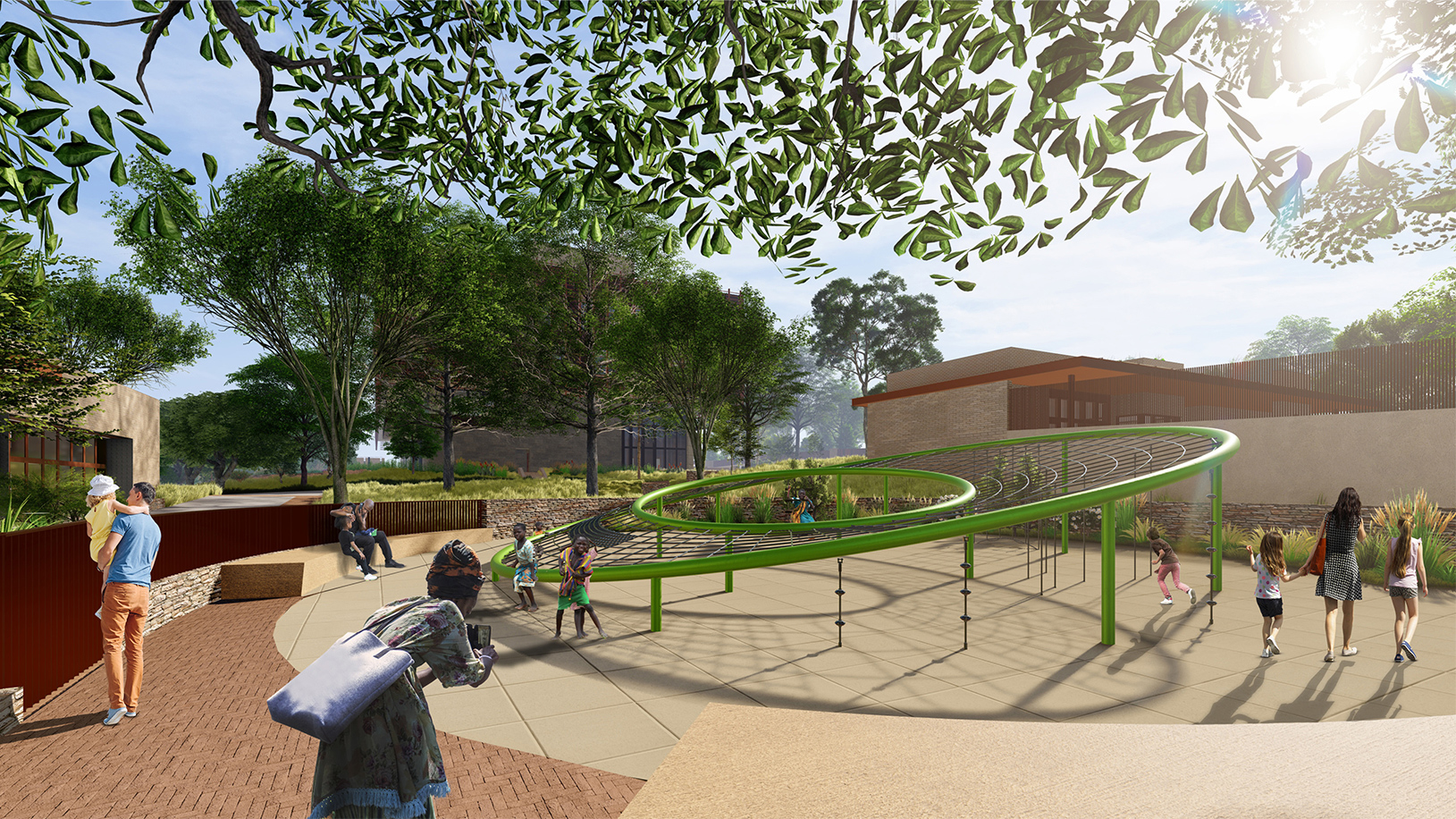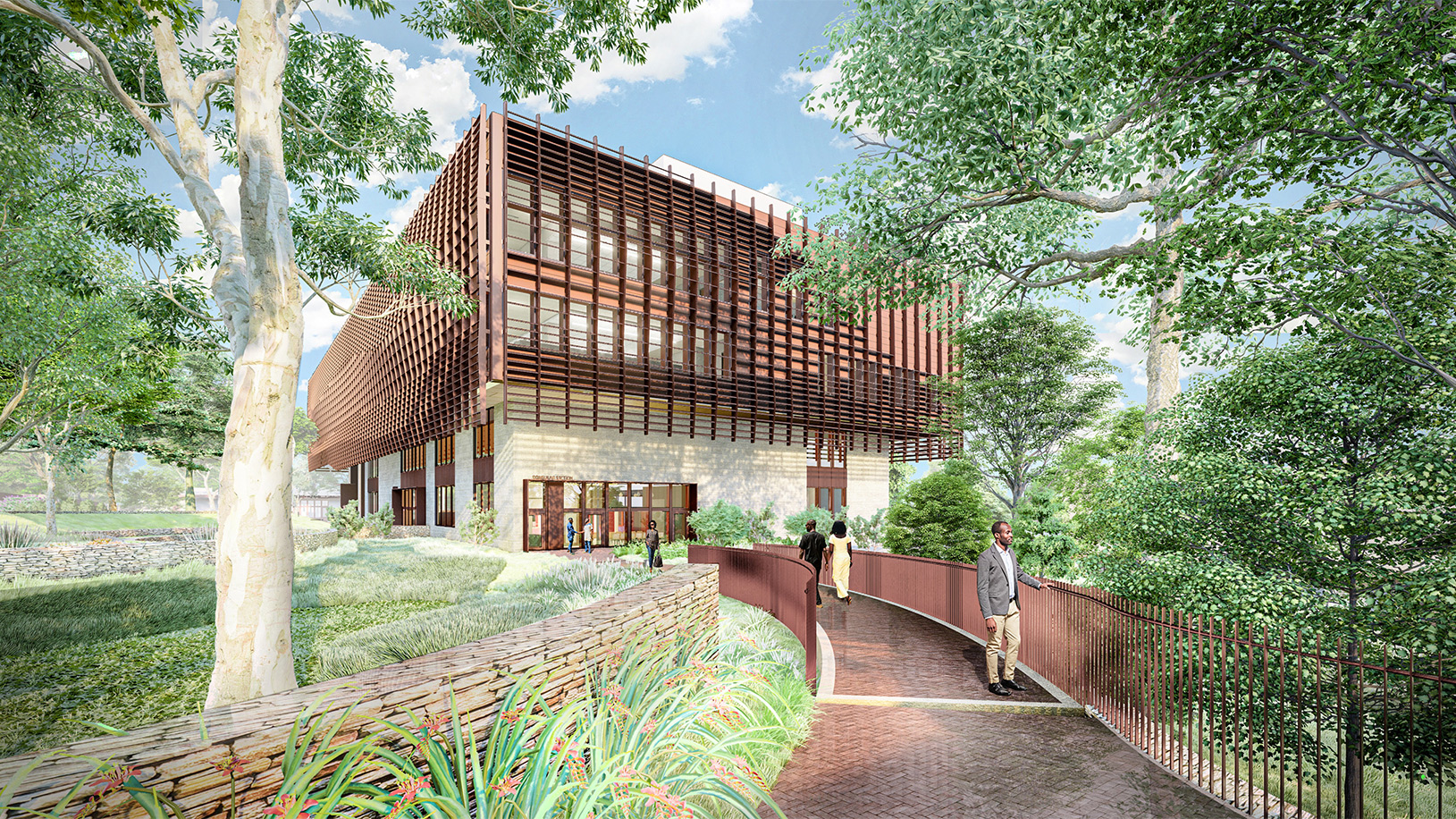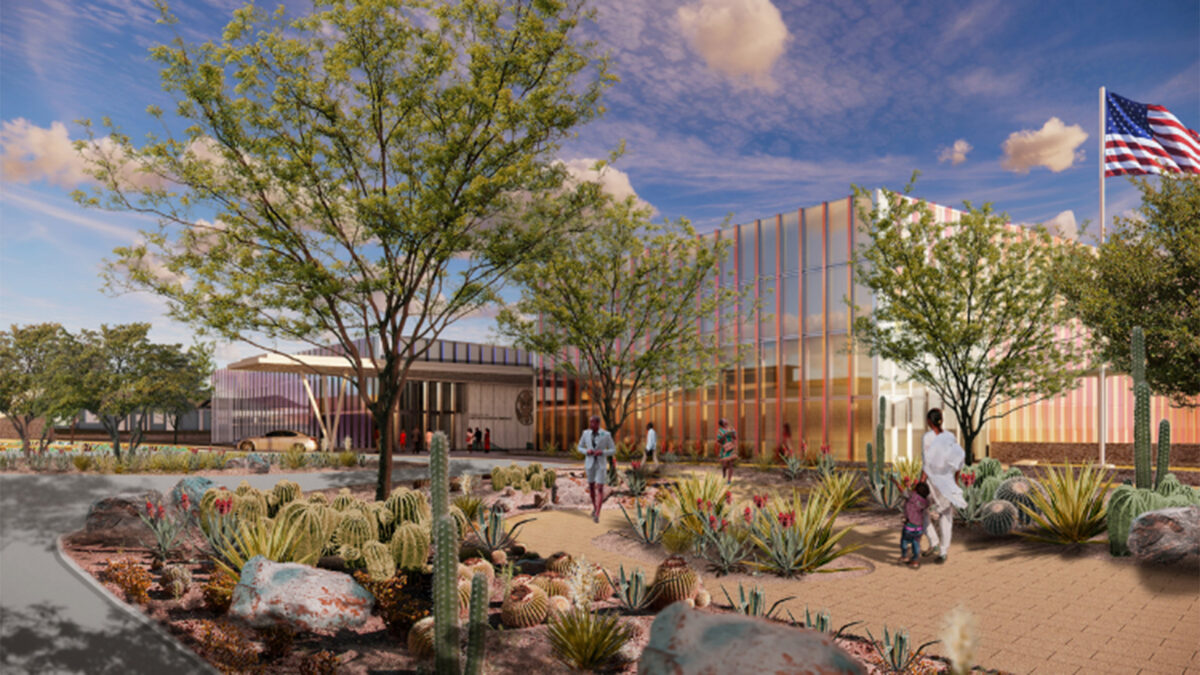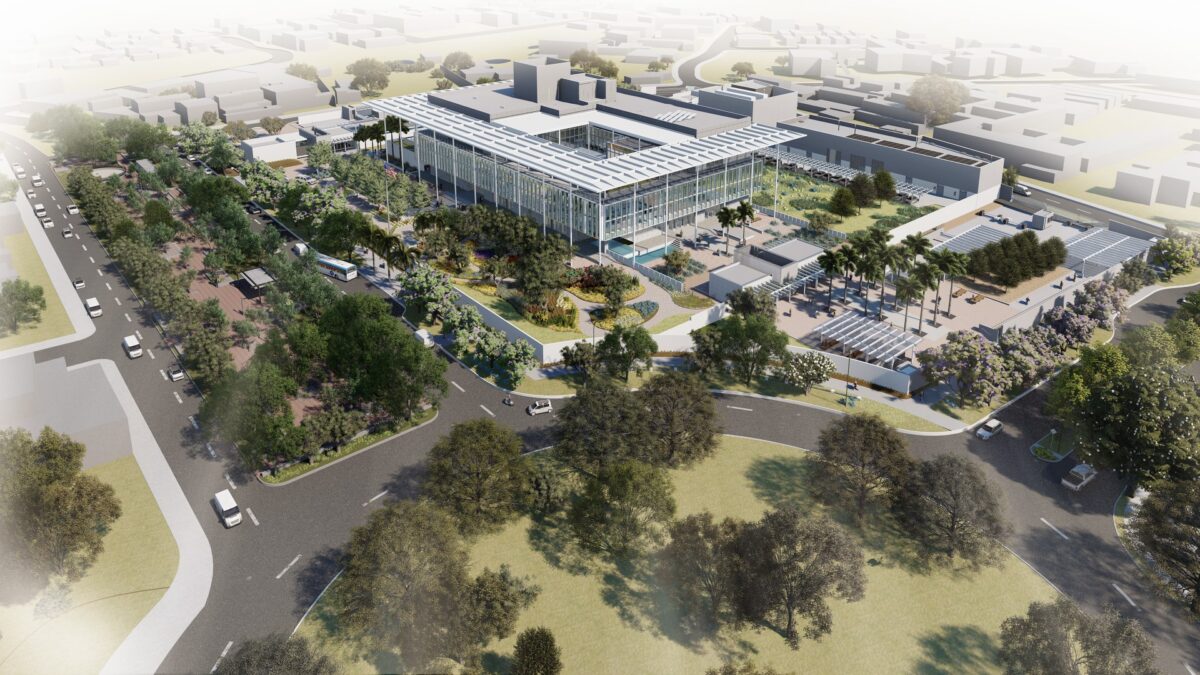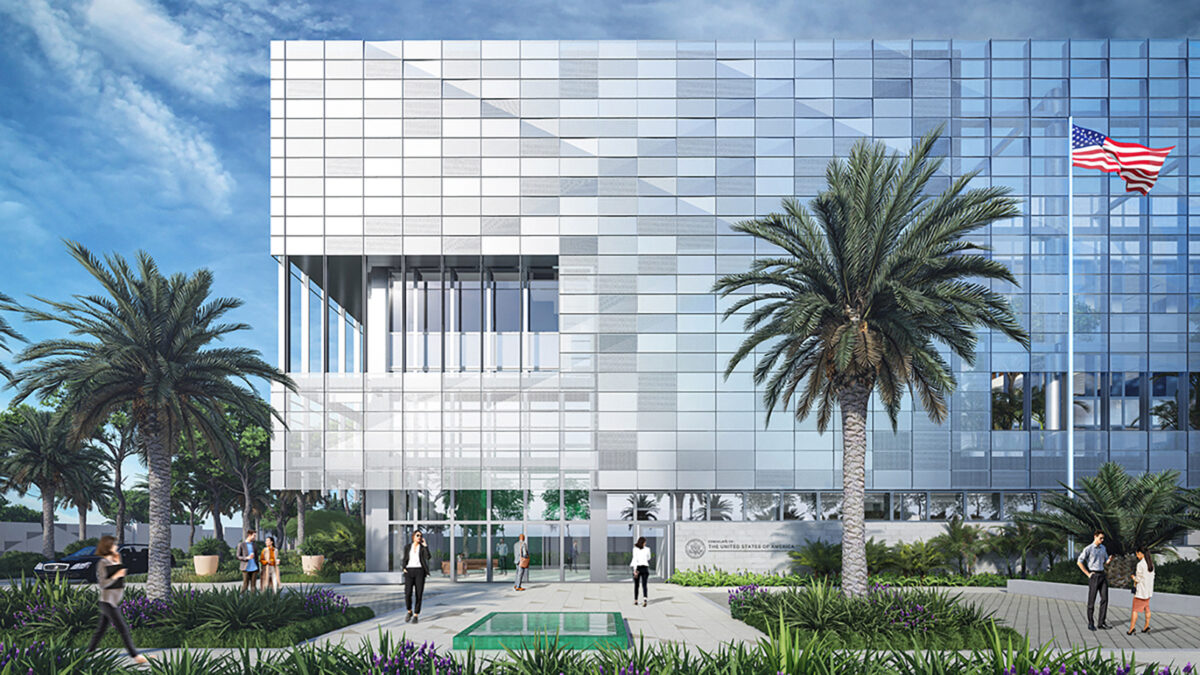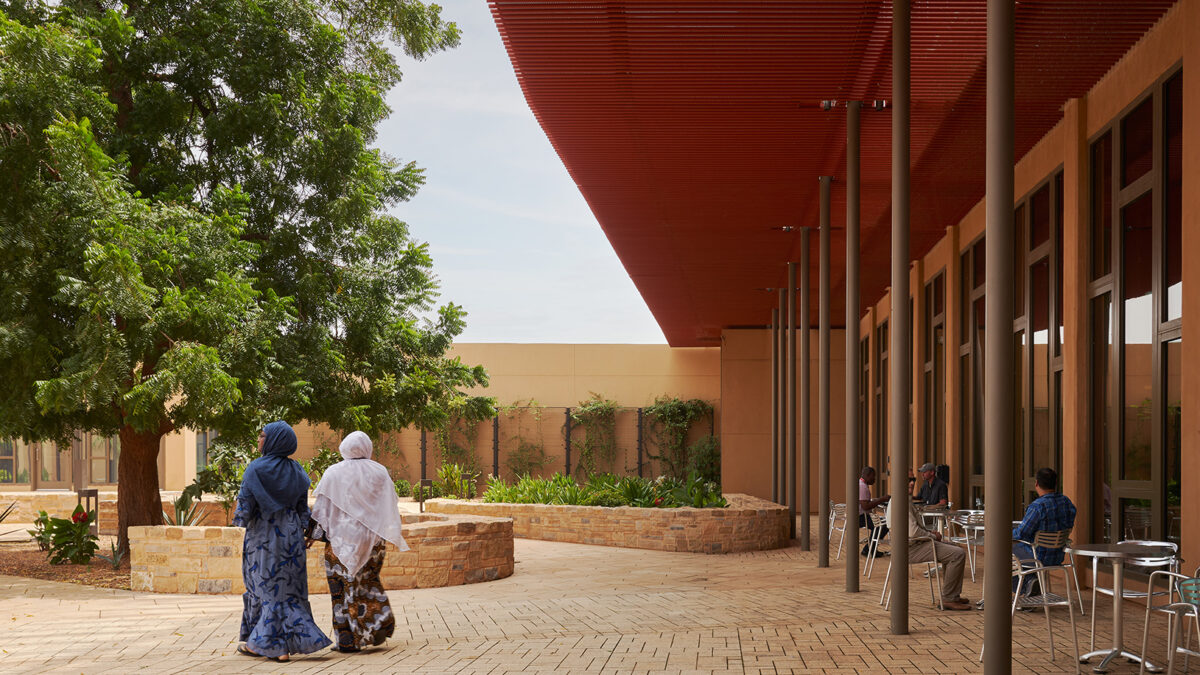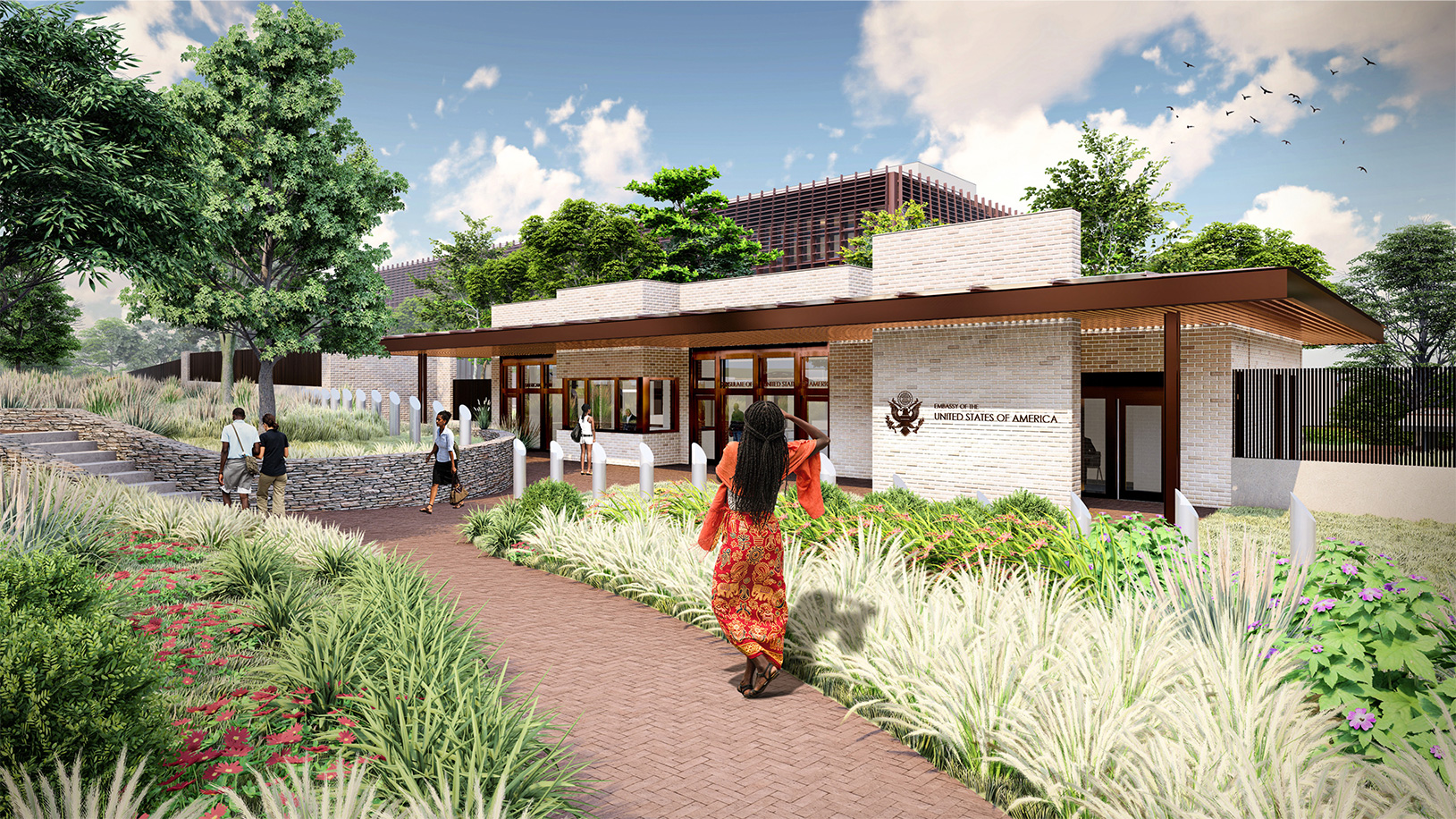
The design for the Malawi capital’s U.S. Embassy recognizes the site’s critical position in its watershed. It seeks to revitalize ecological connections appropriate to a city and region so closely tied to its iconic and biodiverse lakes, rivers, and wetlands. These connections are more than referential; they are functioning design components that create a sustainable, resilient 16-acre campus where visitors and staff experience harmony with the landscape.
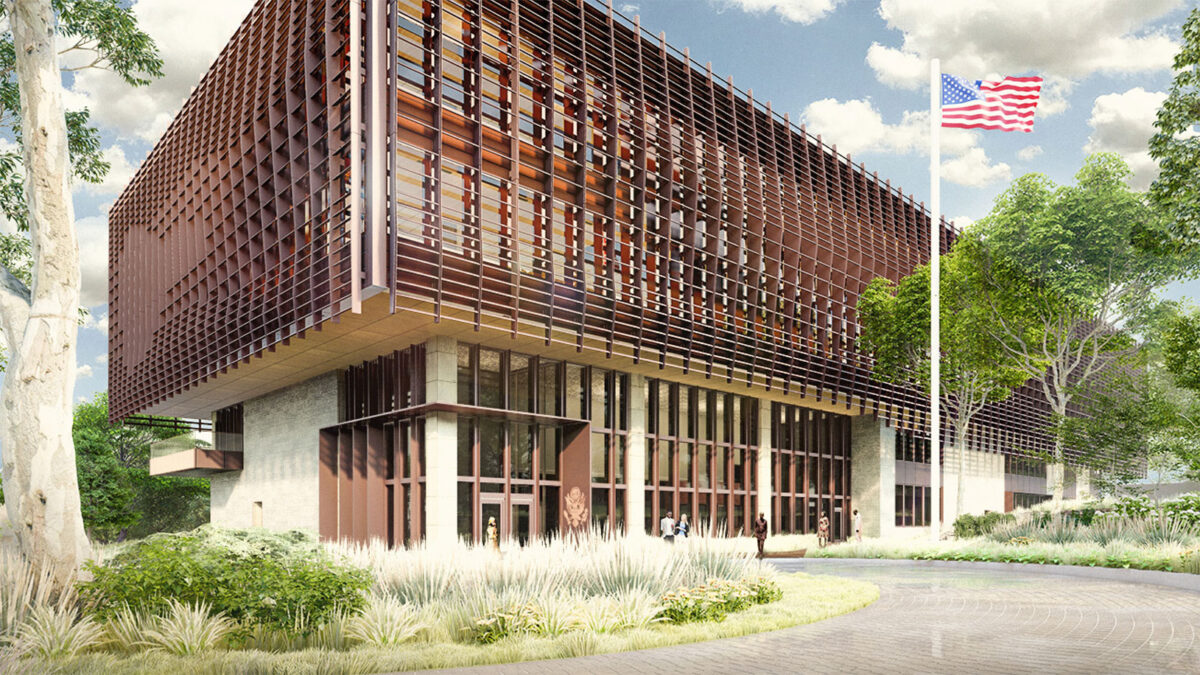
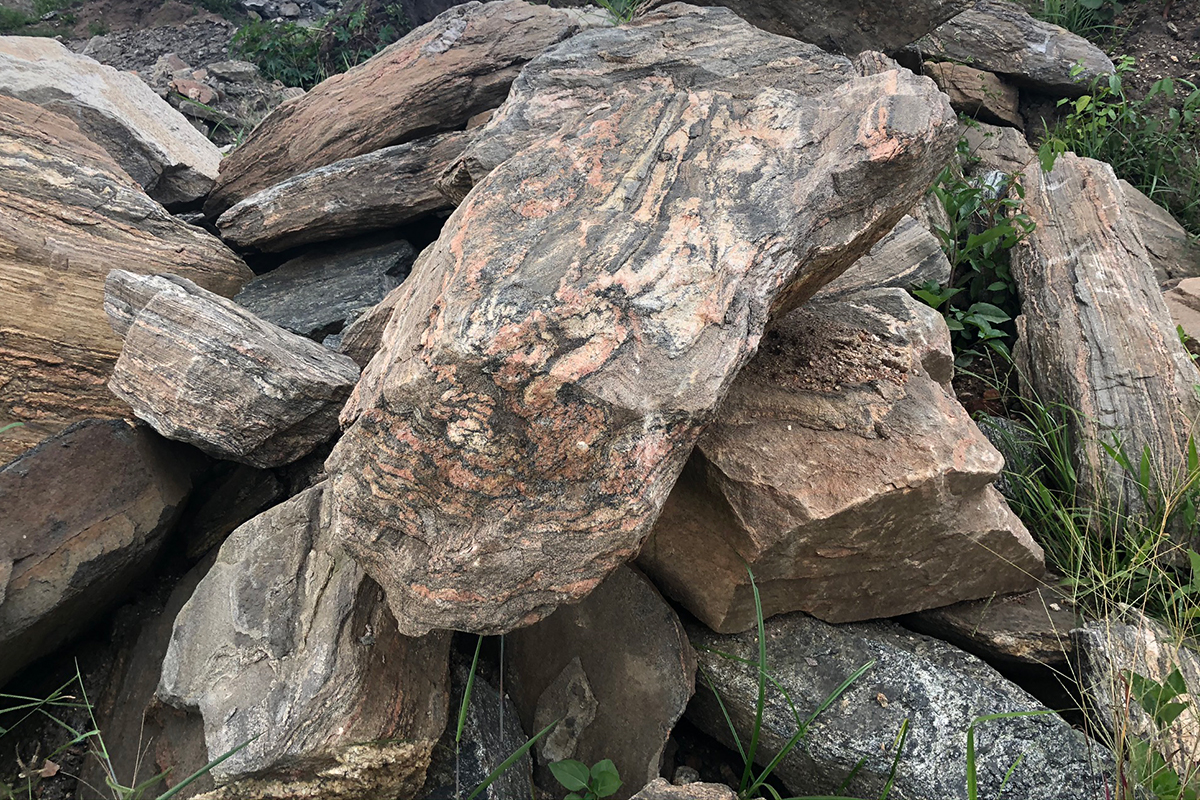
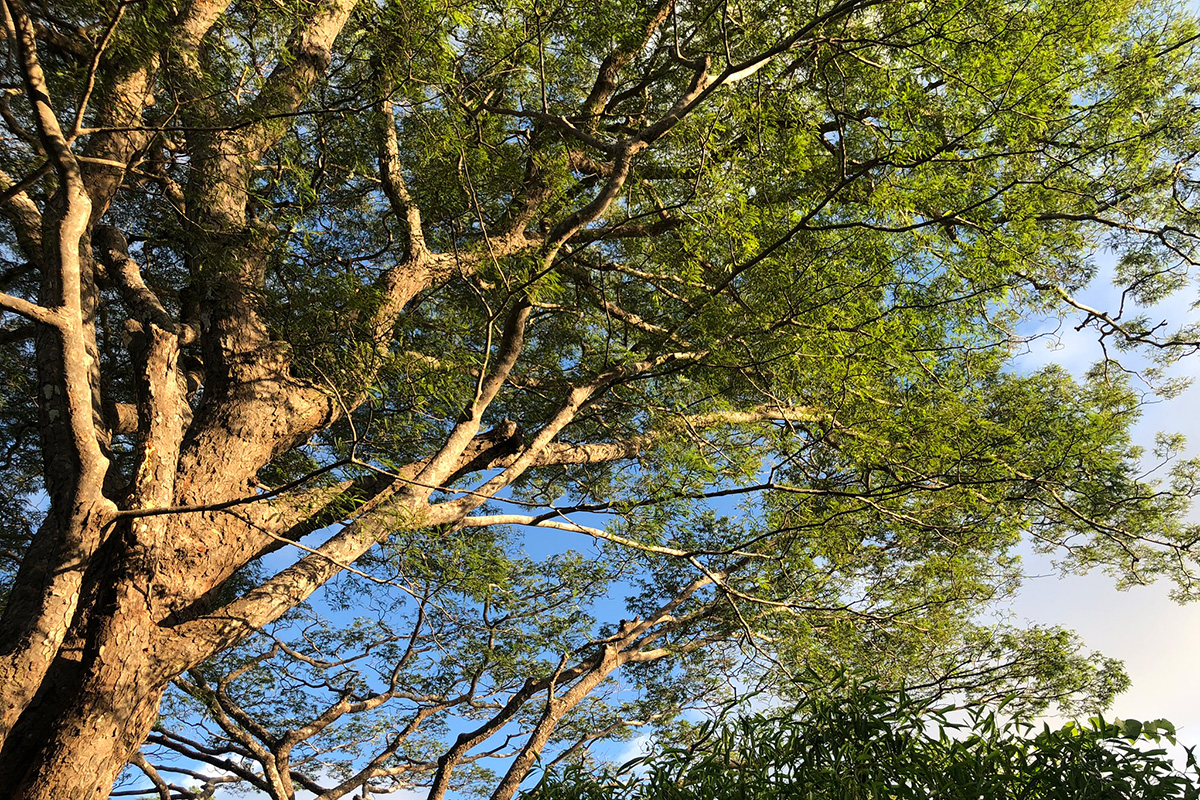
Working with architects at The Miller Hull Partnership, Knot Studio crafted a design for the Lilongwe Embassy that demonstrates the power and promise of ecological stewardship for U.S. Embassy designs worldwide. Beyond meeting the critical sustainability and security goals set by the Department of State, what distinguishes this Embassy design is its integration into local ecosystems and the connections it establishes to the greater watershed.
The embassy site’s and the region’s natural features provide a rich palette of inspiration, metaphor, symbolism, and ecological function. The site is perched above the Lilongwe River, with gentle, rolling grades and dramatic bluffs along its southern edge. This terrain, including mature specimen trees and a seasonally dynamic tributary to the Lilongwe River, was recognized as a valuable opportunity in the effort to create a unique sense of place.
